Grote Street runs east–west from Victoria Square to West Terrace. It is one of the original streets set out in Colonel William Light’s Plan of Adelaide and was named after George Grote, a member for the City of London (1832–41) in the British House of Commons, by the Street Naming Committee on 23 May 1837.
George Grote
George Grote (1794–1871) was a wealthy banker and scholar. In his lifetime he was known chiefly for his 12-volume History of Greece, which he published between 1846 and 1856, and for other works on the philosophy of Plato and Aristotle. But the Street Naming Committee honoured him for his work with Robert Gouger in the early 1830s on the South Australian Association and for his support for the South Australia Act in the British House of Commons in 1834.
Grote was an energetic writer and reformer. A political radical, he supported the views of political economists Jeremy Bentham, James Mill and, later, John Stuart Mill and published several political treatises in the 1820s and 1830s. During his parliamentary term he tried to put his principles into practice, introducing four resolutions and two bills, which attempted (unsuccessfully) to introduce voting by secret ballot. He resigned, disappointed, in 1841 to focus on scholarly research and writing. The following year he also resigned his position as manager of the family bank.
Grote’s scholarly achievements are all the more remarkable for his lack of a formal education. Although he was a gifted student, his father refused to allow him to attend university, sending him instead to work in the family bank at the age of 16. Thereafter he was largely self-taught, studying the classics, Greek, German and philosophy in the evenings. In 1820 he married the writer Harriet Lewis, who encouraged his scholarly pursuits.
In addition to his support for political reform he worked with John Stuart Mill and Henry Brougham to establish the University College London (later London University), where he endowed a chair in philosophy. Perhaps due to his wife’s influence, he encouraged University College to introduce examinations and to allow women to sit for them.
Grote was a Fellow of the Royal Society, a trustee of the British Museum and vice-chancellor of London University. Although he was an atheist, he was buried in Westminster Abbey in recognition of his ‘eminent services … to literature and learning … and in the cause of education’. It is eminently fitting that Grote Street later became the home of South Australia’s first teacher training school, first state secondary school and first school for girls above primary level. These buildings are still in place on the southern side of the street near the Central Market.
Early construction on Grote Street
Light’s Plan of the City of Adelaide divided land into ‘town acres’, 30 of which lined the southern and northern sides of Grote Street. By 1840 all but two of these acres had been sold. All were preliminary land orders purchased in England and allocated by ballot after European occupation of the site. Some buyers, such as London banker Samuel George Smith, never came to South Australia. Others, like George Strickland Kingston, would make their mark in the new colony.
Kingston purchased acre 322 and built a large house on the south side of the street close to West Terrace. He came to work in South Australia as deputy surveyor-general to Light, before establishing his own business as a civil engineer, architect and surveyor. He was prominent in the South Australian Mining Association, including as a director and chairman, from the mid 1840s. Kingston was elected to the first Legislative Council in 1851 and played a prominent role in the campaign to secure greater democracy for the colony. Elected to the lower house of parliament in 1857, he was the first person to be appointed speaker in the House of Assembly and held that post several times until 1880. Kingston is listed as the occupier of the house in Grote Street until his death in 1880. His solicitor son, Charles Cameron Kingston (1850–1908), was elected to parliament in the following year and was later premier and an inaugural member of the federal parliament. The house was demolished in the 1920s.
Kingston produced a map of the city in 1842, which showed the numbered acres, any buildings erected on them and what they were made of. From this map it is apparent that Grote Street was not a sought after location when compared to places like Hindley Street or Currie Street. Only five acres had been built on by 1842, with no construction at all evident on 14 of the 15 acres between Morphett Street and Brown Street and Victoria Square. Two buildings are noted: Kingston’s home of stone and pise or lath and plaster sits on the south side near West Terrace and R Ferguson’s Iron Stores are visible on the north side of the street. One subdivided acre suggests use for livestock or agriculture.
Grote Street’s character as a minor city location was established early in its history and would continue into the twenty-first century.
Churches
Churches for members of two very different Christian faiths were erected on Grote Street during the nineteenth century. However, only one of these has maintained a strong presence.
St Patrick’s Church
In 1844 Dr Francis Murphy was consecrated as South Australia’s first Catholic bishop. In December that year tenders were called for the construction of a school house near the corner of West Terrace. Designed by Kingston, this school on acre 320 on the north side of the street opened on 5 October 1845. It was also intended to serve temporarily as a church yet two months later the foundation stone for Adelaide’s first Catholic church, St Patrick’s, was laid on acre 320. In 1846–47 the school-church was expanded by the addition of a gallery. How much schooling was undertaken in that building is not known. However, during the 1870s Father Julian Tenison Woods (1832–89) and a few religious brothers taught for some time at St Patrick’s School. This structure was on the northeast corner of acre 318, a short distance from the first church on what is now the western side of Gray Street.
St Patrick’s Church was the principal place of Catholic worship in Adelaide until St Francis Xavier Cathedral opened on Wakefield Street in 1858. Tenison Woods was ordained there in 1858, probably the only ordination of a priest in the church. Alterations to the simple stone building of St Patrick’s Church included the addition of a chancel in 1859–60 and a tower, designed by architects Wright & Hamilton, in 1876. By then St Patrick’s was the parish church for residents in the west of the city.
By the early twentieth century St Patrick’s Church was too small for its congregation. A much larger building, said to be based on the Church of the Holy Spirit in Florence, was designed by the architects Woods and Bagot. The original plan as proposed by Walter Hervey Bagot included a large dome and sacristy, but these aspects of the Renaissance style building were not implemented due to limited funds and the commencement of the First World War.
The foundation stone for the new church was laid on 10 November 1912. An estimated 10 000 people attended the ceremony on the corner of Gary Street and Grote Street. The completed church was dedicated on 15 March 1914. In about 1926 the organ from the disused Congregational Church in Hindmarsh Square was installed in the church. St Patrick’s continued to serve as the parish church for the western part of Adelaide until the late 1970s. In the twenty-first century it is primarily used for services in languages other than English. The original church was demolished in 1959 because of salt damp and today the site is primarily used as a car park.
Church of Christ
A chapel was constructed on the north side of Grote Street, but towards the eastern end, for the Church of Christ congregation led by Thomas Magarey. The low building, with its plain stucco façade and belfry, was opened on 14 December 1856. A Sunday school was built to the rear and east of the church in the mid 1880s.
In 1921 Howard Culley drew up plans for a new and larger chapel. The contract for its construction was awarded to Goodenough & Son in 1924. Mrs Gardson and Mrs A Cleveland laid the foundation stone in early 1925. Services to commemorate the opening of the new chapel were held on 24 and 25 April of that year. The predominantly bluestone church featured a front panel of red brick, brick buttresses and a steeply pitched roof. The bluestone came from Tapleys Hill quarries.
The old church was demolished in 1940 and the school demolished to make way for a car park in the late twentieth century. The 1920s church also ceased to be used for religious purposes around this time. Subsequently, when not lying empty, it has been used as a restaurant and entertainment venue.
Hotels
Unlike many other Adelaide thoroughfares, Grote Street housed few hotels. Of the three public houses recorded, all remain in the twenty-first century, but only one continues to operate as a hotel.
The Sportsman’s Hotel at 185 Grote Street began as the Sportsman’s Arms around the corner in Byron Place. It was constructed in 1839 for businessman Walsingham Weston Tuxford. In 1919 the license was transferred to a new Grote Street establishment, which was managed by members of the Tuxford family until 1911. The two-storey, red brick Sportsman’s Hotel had a wide balcony extending across the pavement. It was converted to a business display facility in 2000.
The small Hampshire Hotel on the corner with Bowen Street was briefly known as the Coach-House Tavern when it was built on acre 311 in 1856. It was licensed as the Hampstead Hotel, but operated as the Hampshire House Inn under licensee James G Witt. From 1869 it was known as the Hampshire Hotel.
The original building was replaced by an equally small hotel of the same name in 1911. Designed by F Kenneth Milne, it was constructed for FJ Blades and W Chambers, formerly of the Green Dragon Brewery on South Terrace. Popularly known as ‘the smallest pub in Adelaide’, the distinctive Hampshire Hotel included elements associated with the Arts and Craft Movement of the late nineteenth and early twentieth centuries. The construction referenced medieval styles and proudly displayed building techniques and materials. There was an extensive use of curved, decorative joinery to the eaves and balcony of the red brick building. The windows had multi-paned upper sashes and leadlight typical of the period in the lower sashes. In the early twenty-first century the heritage listed hotel operated as backpacker accommodation before falling vacant.
The original Metropolitan Hotel was built for J Penaluna in 1858 on the northeast corner with Penaluna Place. Penaluna replaced it with a much larger building in 1883. The later FW Dancker designed Metropolitan Hotel occupied the block along Grote Street between Pitt Street and Penaluna Place. It was of bluestone rubble construction, with a chamfered corner entrance and balcony extending across its front face and around into Pitt Street. The Metropolitan was owned by J Penaluna’s descendants until 1979. The heritage listed hotel continues to be popular with patrons of Her Majesty’s Theatre on the opposite corner of Pitt Street.
Living on Grote Street
There was never a great number of people living on Grote Street. Scattered residences intermingled with other buildings along the street for much of the nineteenth century. The ‘aerial views’ of Adelaide provided in the Australasian Sketcher of July 1875 and the Illustrated Sydney News of July 1876 show a sprinkling of single cottages and terraces around the junction with Morphett Street and Brown Street and some larger homes, including Kingston’s, towards West Terrace. By 1880 housing density had increased but gaps in building construction remained.
Nineteenth century street directories reveal that heads of households overwhelmingly were lower paid workers, with some from trades and white collar occupations. Labourers, drivers, drovers, and drapers’ and grocers’ assistants shared the street with cabinet makers, moulders, tailors, dressmakers, tinsmiths and clerks. From the turn of the century residents gradually moved out, making way for small business and industry. The 1920s saw a spate of demolitions. Cottages and terraces were replaced by timber yards, clothing and confectionary factories, secondhand dealers, car dealers and government facilities.
Advances in public education
A prominent group of three buildings from the late nineteenth century stand out on the south side of Grote Street between the Central Market precinct and Brown (now Morphett) Street. Together they serve as a monument to major advances in public education in South Australia.
The Model School
The first of the three buildings to be constructed was the Model School on the corner of Morphett Street. The 1873 annual report of the Board of Education stated that the purpose of model schools was ‘to furnish a standard of method and organisation for the public schools generally’. In the absence of systematic teacher training, they acted as guides for the developing public school system.
The Model School on Grote Street was designed by architect Edward John Woods in 1872 and built by T Martin & Son in 1873–74. The single-storey Gothic style building was constructed of bluestone with brick quoins. Gabled wings at each end were connected by a central section fronted by a long veranda supported by brick and bluestone arches. A turret in the centre of the roof held a bronze bell.
The school could accommodate 600 pupils and was divided into three sections separating girls, boys and infants. The building’s design gave particular attention to the health of the children. The rooms were ventilated through ceiling and wall apertures. An arcade paved with slate between two large classrooms also helped to keep the rooms cool and provided a sheltered walk. Minor alterations to the classrooms were made in 1892 and in 1908 new classrooms were added to each wing at the rear.
The Training School
The central building in the group was erected as South Australia’s first teacher training school. The Education Act 1875 made education compulsory for children aged 7–13 years. It required the construction of more schools and the provision of systematic teacher training and recruitment. Model schools on their own could not address the need for consistent, quality teaching methods and content across the colony.
In 1874, in anticipation of the passing of the Act, the Central Board of Education invited Woods to submit plans for a training school given his previous successful design for the Model School. The slate-roofed, bluestone building with a gabled front entrance was constructed in 1875–76 by Brown & Thompson. It included a large lecture hall with rounded corners to improve sound, an apparatus room, a library, a practising school room for 75 children and two classrooms. The Training School opened without ceremony on 8 June 1876. LG Madley of the Model School was appointed principal.
In 1909–10 the single-storey Gothic style building was transformed into a two-storey Tudor style facility by Superintendent of Public Buildings Charles Edward Owen Smyth. The brick upper storey was constructed by JJ Ashman. Tudor style castellations and bay windows were added and the walls rendered to harmonise both storeys.
The Advanced School for Girls
The eastern building was erected to house the Advanced School for Girls – South Australia’s first state secondary school and its first state school for girls above primary level. The establishment of this school was prompted by the expansion of public education and the consequent need for secondary educated girls able to be trained as teachers.
The Advanced School for Girls began operating from temporary facilities in Franklin Street on 7 October 1879. Although a public facility it was self-supporting through student fees. The Grote Street premises were designed by Owen Smyth in 1890 and built by JJ Leahy in 1891. The two-storey brick school contained five classrooms and a dining room. Limited funds due to the 1890s economic depression led to a plain, but functional, building. In 1902 a music room was added by W Ling & Son. Since then the building has remained largely unaltered.
Continuation School for Boys/Adelaide High School/Adelaide Girls High School
In 1908 the Model School and the Training School were amalgamated as the Continuation School for Boys. The Continuation School then amalgamated with the Advanced School for Girls, which opened as Adelaide High School on 24 September 1908.
Girls and boys were still segregated in Adelaide High School, which occupied the site until 1917. Classes, especially those for boys, gradually expanded to nearby rented premises. In 1939 four classes were located in the Printers Trade School opposite the former Model School. In 1951 the boys were relocated to the new Adelaide Boys High School on West Terrace. Girls continued to occupy all three buildings on Grote Street as Adelaide Girls High School until the 1970s. In 1976 the schools were amalgamated and by 1979 the remainder of the girls school had transferred to West Terrace.
The Grote Street buildings were initially taken over by the Department of Further Education and the Multicultural Education Centre. Later uses include as a private school, a child care centre and a private residence.
Unions and Trades Hall
The co-ordinating body for trade unions in South Australia, the United Trades and Labor Council (UTLC), was formed in Adelaide in 1884. Without the money to build premises of its own, the UTLC initially met in the Bristol Tavern in Franklin Street, followed by the Selborne Hotel in Pirie Street. Desperately needing permanent offices, unions asked the state government in 1886 for a grant of land in the city for a Trades Hall or, failing this, funds to acquire premises. ULTC Secretary W Robinson argued, ‘we have a claim on the state for a share of the land we have made more valuable’. The granting of land to unions in Sydney and Melbourne was cited as precedent for the request. However, Premier John Downer rejected the idea. He maintained, ‘They must rely on self-help’. A subsequent delegation, including 14 members of parliament, to the Cockburn Government received a positive response. But the government’s move to grant support was defeated in the Legislative Council (Moss, pp184–5).
While parliament did not accept responsibility for the provision of land or finance, individual members of parliament were willing to assist. Richard Chaffey Baker donated £1000 and George Hawker and John Howard Angas each gave £100. Land was finally acquired on the north side of Grote Street, near Victoria Square. The first sod was turned on 30 July 1895 and the foundation stone was laid on Eight Hours Day, 2 September 1895 by Lucy Kingston, wife of Premier Charles Cameron Kingston. The ceremony was held before a large gathering and a backdrop of 8 Hours Day Committee and union banners. The completed Trades Hall was officially opened on 4 March 1896. In the early 1900s Robert Barr Smith donated £2300 to pay off the Trades Hall mortgage (Moss, p185).
From 1896 the completed Trades Hall housed offices of the UTLC, numerous individual unions, the United Labor Party and workers welfare organisations. By 1925 these premises were cramped and organisations such as the Union Sick and Accident Society moved into separate offices next door. In 1950 the Liquor Trades Union constructed its own Union Hall at 116 Grote Street. This building housed several unions as well as the offices of the Workers Weekly Herald and the Aged and Invalid Pensioners Association.
By the 1960s Trades Hall on Grote Street could no longer meet the needs of an expanding union movement. In 1964 the South Australian Parliament legislated to enable the sale of the building. On 23 September 1972 Premier Don Dunstan opened a much larger Trades Hall at 11–16 South Terrace, Adelaide.
Adelaide Central Market
Around 3am on 23 January 1869 a ‘small but noisy procession’ of produce traders made its way from the East End Market on East Terrace to a new retail market site close to Victoria Square, between Grote Street and Gouger Street. The City Market, as it was then called, began trading on land owned by the Adelaide City Council on the same day. At that stage there were no covered sales areas or shops, just open land, a fence and some gas lights.
Two large sheds for produce carts were completed by June 1869 and the City Market was officially opened on 22 January 1870. Vegetables, fruit, hay, fish and game were sold from 50 to 100 carts on Saturday morning and then also on Tuesday morning. To cater for expanding demand the two sheds were joined together by a roof over the roadway that separated them and an additional shed was constructed in 1873. Additional shops were erected along the perimeter of the market facing Gouger Street and Grote Street through the 1880s.
In 1889 plans to rebuild the market were drawn up by the Council’s draughtsman R Sloan under the direction of City Engineer J Vicars. The new premises featured an elaborate, two-storey brick façade on Grote Street, which included 16 shops at ground level with arched windows above. The foundation stone was laid on 8 February 1900 and the new facility was occupied that same year. Not long after it was completed, a 36.8m veranda was added to the frontage.
Later development included an arcade of shops between Gouger Street and Grote Street in 1915 and the extension of the Market Arcade to Victoria Square in 1920. A major two-stage redevelopment was carried out to the City Market behind the street façades in the 1930s.
Over 30 years later, the City Council initiated a much-needed upgrade of the market. Plans were drawn up by architects Cheesman, Doley, Brabman & Neighbour and work commenced on 8 January 1965. During the redevelopment the eastern end of the Grote Street brick façade was demolished as were the early cast iron and glass arcades. The renamed Central Market was opened on 17 June 1966 by Lord Mayor James Irwin.
The Empire Theatre, the Promethean and Her Majesty’s Theatre
Three theatres have operated on Grote Street. The first to open, on 10 April 1909, was the Empire Theatre. It occupied renovated premises previously occupied by three two-storey shops on the west side of the City Market. Designed by A Barnham Black, the theatre initially featured vaudeville acts and moving pictures. On 4 June 1910 the theatre’s first season of pictures was held. It continued to operate as a picture theatre until 1948. In 1952 it was acquired by People Stores Ltd and became part of its retail complex extending to Gouger Street.
The small Promethean Theatre at 116 Grote Street occupied the old Liquor Trades Union Hall from the early 1980s. It showcased small theatre company and university student productions and Adelaide Festival of Arts and Fringe Festival events. In 2007 the theatre closed but the Promethean continued to operate as a venue for cabaret and classical, jazz and pop music.
The much larger Her Majesty’s Theatre, situated on the northwest corner with Pitt Street, continues to operate as a playhouse and music venue. This theatre was known as the Princess Theatre when it was built in 1912–13 for Edwin Daw. It was constructed on an open paddock used by market gardeners and stallholders at the City Market across the road as a place to park their carts and feed their horses. The theatre was designed by architects Williams & Good and built by W Essery and J Hennings.
The Princess Theatre was immediately leased by Harry Rickards, a leading Australian variety entrepreneur. It was renamed the new Tivoli Theatre (as distinct from the old Tivoli on King William Street) by governing director of Harry Rickards Tivoli Theatre Ltd, Hugh D McIntosh. The new Tivoli was officially opened on 5 September 1913 by Adelaide Mayor John Lavington Bonython. Actress Lillie Langtry was the star of the night.
The Tivoli Theatre continued to offer plays and vaudeville. During difficult times such as the First World War it housed ‘Tango Teas’, a mix of fashion parades, entertainment and light refreshment. But it never became the principal theatre venue in Adelaide, perhaps due to its location away from the busier areas of the city near North Terrace.
In 1962 the Tivoli was extensively altered and renamed Her Majesty’s Theatre following the closure and demolition of the Theatre Royal in Hindley Street. Alterations included changes to the entrance foyer and the replacement of the original dress circle and gallery with a single upper circle. Backstage and foyer facilities were improved in 1978–79 when Her Majesty’s was renamed the Opera Theatre and became the home of the State Opera Company of South Australia. It reverted to being Her Majesty’s Theatre in 1989 when State Opera moved to the Festival Theatre.
Part of the market precinct
The main attractions of Grote Street in the late twentieth and early twenty-first centuries have been its theatre, restaurants and being part of the Central Market precinct. Locals and tourists alike have been drawn to the market’s quality fruit, vegetables, meat, poultry, fish, smallgoods, breads, cakes etc. Cafes and restaurants have sprung up in the streets surrounding the market. Grote Street includes a share of these, although most are concentrated on Gouger Street.
From the late 1970s the market precinct has increasingly reflected migration from South East Asia. Market stalls and surrounding shops now sell a wide range of South Australian grown and imported Asian produce. Moonta Street, linking Grote Street and Gouger Street, is the centre of Adelaide’s Chinatown. Large Paifang or ‘gateways’ mark each end. They were erected by the Adelaide City Council and are guarded by Chinese lions. Chinatown has hosted the official Lunar New Year celebrations in Adelaide since 2003.
In the twenty-first century the western end of the street supports businesses particularly associated with aspects of housing construction and renovation. Tiling, inbuilt furniture, bedding and house decoration firms abound. University student accommodation is bringing some residents back to the area. St Patrick’s Church continues to serve a diverse Catholic community.


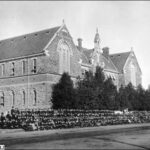

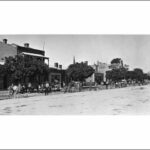
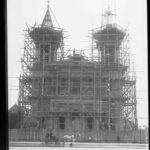
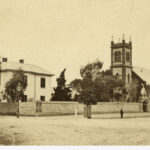
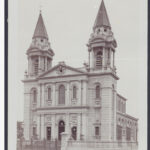


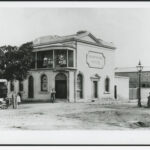
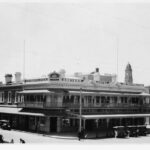
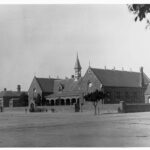

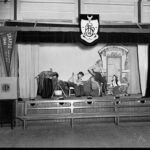
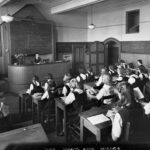
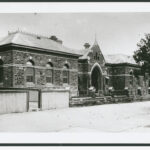
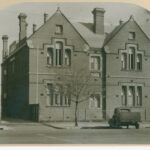
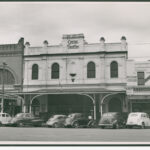
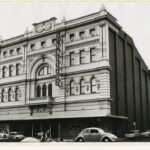
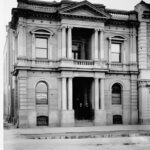

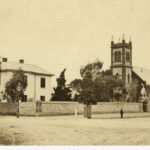
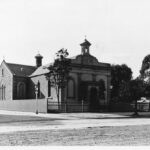
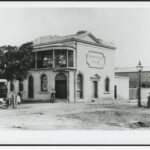
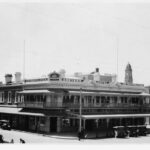
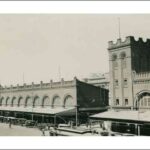
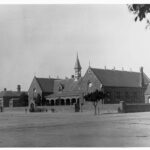
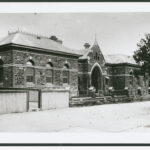
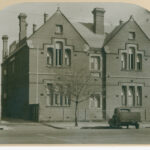
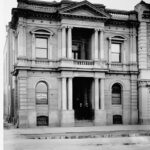
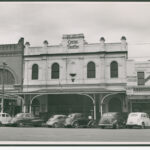
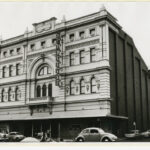

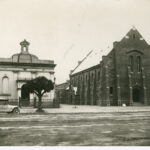
Comments